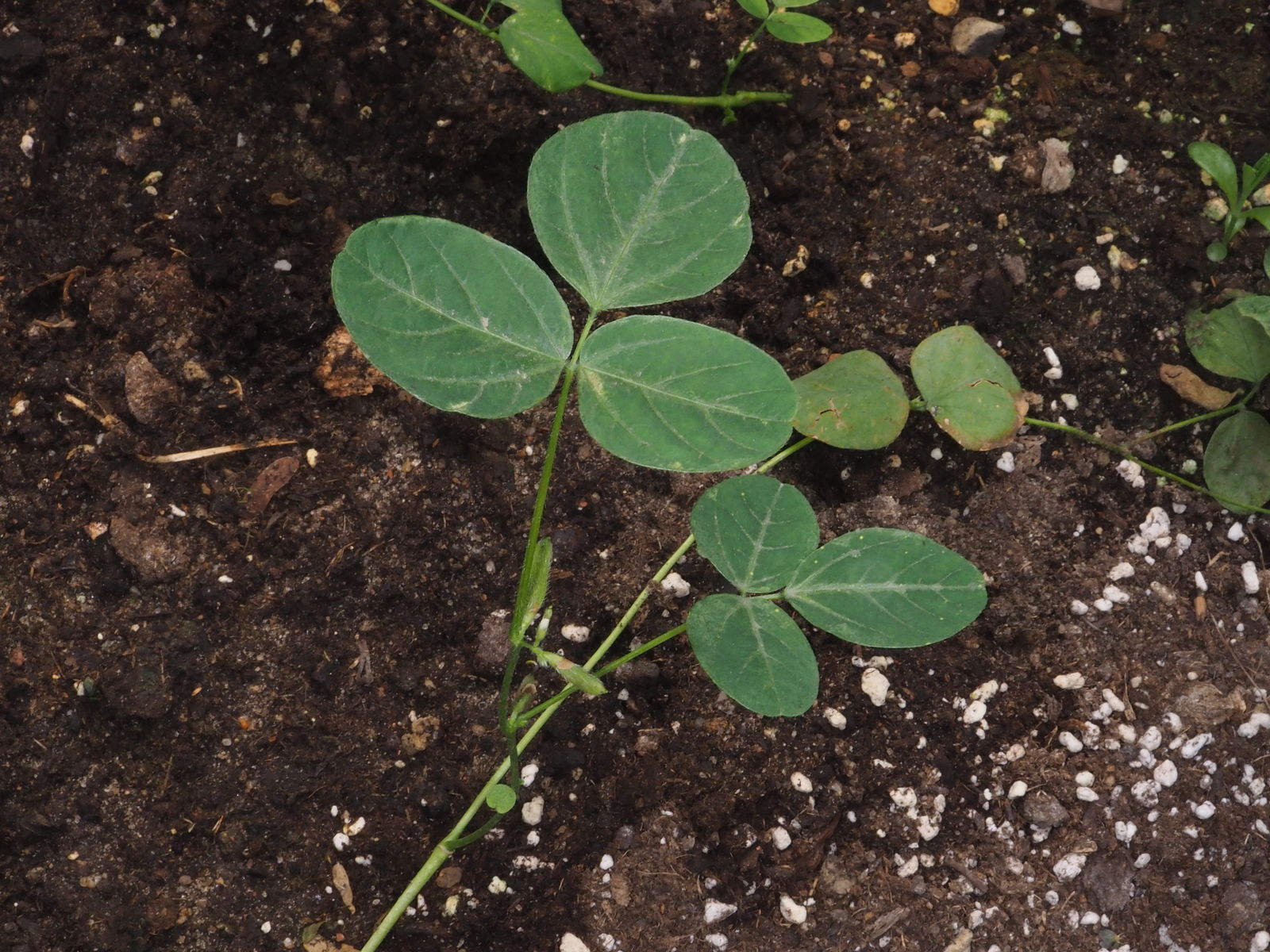Soybean
glycine max
Also known as: ["soy","soja"]
Overview
A leguminous plant cultivated for its edible bean, which has numerous uses in food and industrial applications.
Benefits & Perks
["edible fruits","medicinal use","wildlife attractant (bees, butterflies, birds)","drought tolerant"]
Botanical Classification
| Phylum: | Magnoliophyta |
| Class: | Magnoliopsida |
| Order: | Fabales |
| Family: | Fabaceae |
| Genus: | Glycine |
| Botanical Name: | Glycine max |
Plant Characteristics
Basic Information
- Category: Fruits
- Suitable Location: outdoor garden bed in full sun
- Suitable For:
- Is Weed: No
- Allergenicity: moderate
Environmental Needs
- Climate: {"temperatureRange":"10–35°C"}
- Hardiness: {"zones":"8–11"}
- Misting: rarely required, only if ambient humidity is very low
- Drainage: Well-draining to prevent waterlogging.
- Soil Type: Loamy, fertile soil with good organic matter content.
Maintenance Level
- Maintenance Level: moderate
- Toughness Level: moderate
- Pruning Frequency: As needed; typically light pruning after harvest or flowering.
- Pruning Intensity: Light to moderate; avoid heavy pruning unless necessary.
Care Details
Ideal Sunlight Coverage:
Full sun (6–8 hours of direct sunlight daily); adjust for seasonal variations to prevent scorching.
Sunlight Tolerance Tips:
Acclimate plants gradually to intense sunlight; provide shade during peak summer hours; ensure proper ventilation in indoor settings.
Care Requirements
Care Difficulty
moderateeasy
Sunlight
full sun
Rotate plants for even light exposure; use reflective surfaces to enhance light; monitor for signs of sunburn.
Watering
every 5–7 days during active growth, less frequently in dormancy
Water thoroughly until runoff; allow soil to dry between waterings; avoid overhead watering to prevent fungal issues.
Soil
well-draining, loamy soil with moderate organic content
pH: 6.0–7.0 (slightly acidic to neutral).
Test soil pH annually; amend with lime if too acidic; ensure good aeration.
Temperature
Optimal range: 70–85°F (21–29°C); prefers warm, stable conditions; sensitive to frost.
Use shade cloth in extreme heat; protect from frost; maintain consistent temperatures.
Fertilizing
every 2–4 weeks during growing season with balanced liquid fertilizer
Dilute fertilizer to half strength; apply to moist soil to prevent root burn; avoid fertilizing stressed plants.
Propagation
Methods
Seed propagation is most common; can also be propagated via stem cuttings.
Step-by-Step Propagation Guide
- Sow seeds 1 inch deep.
- Keep moist.
- Thin seedlings.
- Or take cuttings, apply hormone, and place in medium.
Best Time: Spring or early summer when temperatures are warm and stable.
Environment
Warm (75–85°F), high humidity, and bright indirect light.
Medium
Well-draining seed-starting mix or perlite and peat moss blend.
Hormone
Not typically required for seeds; rooting hormone can aid stem cuttings.
Timeline
Seeds germinate in 7–14 days; stem cuttings root in 2–4 weeks.
Tools Needed
Seed trays, pots, pruners, rooting hormone, misting bottle.
Quick Tips
Use fresh seeds for best germination; maintain consistent moisture; provide bottom heat for faster germination.
Pruning & Repotting
Pruning Guide
Method
Snip off dead or yellowing leaves; trim back overgrown stems to encourage bushier growth.
Pruning Plan
Minimal pruning needed; focus on removing dead or diseased foliage to improve air circulation.
Tools
Pruning shears, gloves, disinfectant.
Checklist
Disinfect tools; prune dead/diseased parts; avoid over-pruning; clean up debris.
Repotting Guide
Best Season
Early spring before new growth begins.
Pot Size
One size larger pot (e.g., +2–3 inches in diameter).
Method
Gently remove plant; trim roots if necessary; place in new pot with fresh soil; water thoroughly.
Suggestions
Generally not required for field-grown soybeans; container-grown plants may need repotting every 2 years.
Checklist
Choose appropriate pot; prepare new soil; handle roots carefully; water after repotting.
Advanced Care Tips
Watering Mastery
Watering Checklist
Check soil moisture; water deeply; ensure drainage; avoid wetting foliage.
How to Apply Water Properly
Water directly at the base of the plant, ensuring even saturation of the root zone; allow excess water to drain freely; water early in the morning to minimize evaporation.
Watering Schedule Tips
Water deeply once the top inch of soil is dry; reduce frequency in winter to prevent root rot.
Soil Improvement
Add compost or well-rotted manure; incorporate perlite for drainage; use cover crops to enrich soil.
Temperature Stress Management
Signs of Temperature Issues
Chlorosis, stunted growth, bud drop, or leaf necrosis.
Cold Stress
Low temperatures slow growth, reduce photosynthesis, and can lead to frost damage or death.
Solution: Provide frost protection (e.g., row covers); avoid planting in late fall or early spring; ensure soil is well-drained to prevent cold waterlogging.
Hot Stress
Excessive heat causes wilting, leaf scorch, reduced yield, and flower abortion.
Solution: Provide shade during peak heat; increase watering frequency; mulch to retain soil moisture.
Fertilizing Guide
Fertilizing Checklist
Check fertilizer type; dilute correctly; apply to soil; avoid foliage contact.
Fertilizing Method
Use balanced, water-soluble fertilizer (e.g., 10-10-10) every 4–6 weeks during growing season; reduce or stop in winter.
Common Problems & Solutions
Toxicity Warning
Cats
Non-toxicSoybeans are not considered toxic to cats when consumed in moderation and properly prepared. They can be a source of protein in cat diets.
🌿 Toxic Parts:
⚡ Toxic If:
Generally non-toxic
Dogs
Non-toxicSoybeans are not considered toxic to dogs when consumed in moderation and properly prepared. They can be a source of protein in dog diets.
🌿 Toxic Parts:
⚡ Toxic If:
Generally non-toxic
Humans
Non-toxicGlycine max, commonly known as soybean, is a widely cultivated legume that is a major source of protein and oil in human diets. It is generally considered non-toxic when consumed in typical culinary preparations.
🌿 Toxic Parts:
⚡ Toxic If:
Generally non-toxic
Frequently Asked Questions
Q: Is soybean safe for human consumption?
A: Yes, soybeans are safe for human consumption when properly cooked, but raw soybeans contain toxins that can cause digestive issues.
Q: Can soybeans be grown in containers?
A: Yes, soybeans can be grown in containers, but they require adequate space for root development and sufficient sunlight.
Q: What are the main uses of soybeans?
A: Soybeans are primarily used for food (tofu, soy milk, edamame), animal feed, and industrial products like biofuels and plastics.
Quick Reference
| Family: | Fabaceae |
| Care: | moderate |
| Light: | full sun |
| Water: | every 5–7 days during active |
Get Expert Care Tips
Download the Plantious app for personalized care reminders and plant identification!
Google Play App Store








